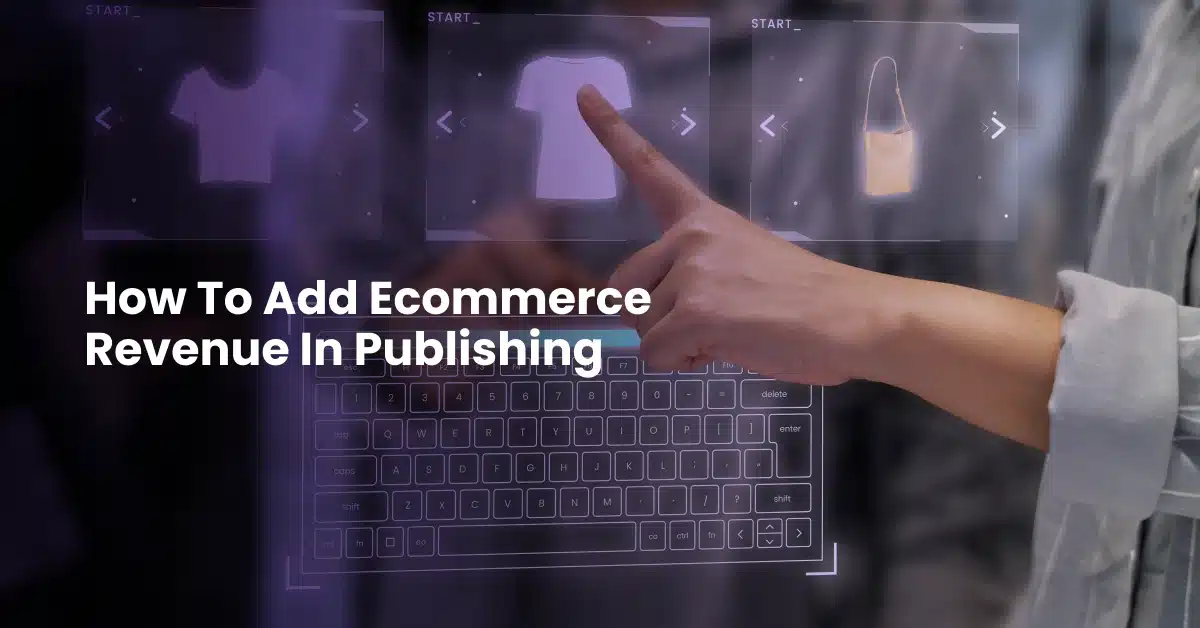Publishing companies historically had just two ways to earn revenue: advertising and subscriptions. If you have already optimized these revenue models to a high level, you need another way to boost the bottom line. Ecommerce is the most significant opportunity publishers have today to increase revenue.
Two primary strategies to add e-commerce monetization and revenue to a publishing company are direct sales and affiliate marketing. Both have their place, so let’s consider the advantages and disadvantages of both models.
The Traditional E-commerce Revenue Model For Publishers
The established model to add e-commerce revenue to a publishing company lies in selling products, services, and experiences directly related to the publication. To bring this strategy to life, look at the following examples.
- WIRED. Wired has an online merch store selling totes, apparel, water bottles, and other products with Wired branding.
- The New Yorker. The magazine’s online shop offers playing cards, umbrellas, t-shirts, and baby clothing.
Advantages
- Deepen engagement with your best fans.
As defined in Kevin Kelly’s famous essay 1000 True Fans, true fans are hungry to expand their engagement with your brand. For example, consider the passion of New York Times crossword enthusiasts. Many subscribers take pride in solving the puzzles over the week. They enjoy the challenge! It’s a fair bet that a considerable portion of this segment will be interested in directly related crossword products like tote bags, crossword books, and artwork.
- Product creation is relatively easy.
Creating a new product is sometimes seen as risky. Fortunately, the traditional e-commerce approach simplifies product creation. For instance, some publishers simply put their logo on a t-shirt and sell that offering. The time delay from a product idea to selling a product could be weeks or months, depending on the complexity of the product.
Disadvantages
- Management overhead to oversee e-commerce operations.
Publishers may not have significant experience or expertise in the art of managing e-commerce operations. This disadvantage matters because the organization may hire additional staff to oversee e-commerce sales. Outsourcing fulfillment does not eliminate this risk either – the publisher still needs to oversee the vendor to ensure quality standards are met.
- Profit margins are only slightly better than publishing.
Depending on your pricing strategy, achieving significant profit margins with e-commerce may take time and effort. Take branded apparel as an example. According to NYU Stern School of Business research, the gross margin for publishing and newspapers is 46.55%. In comparison, online retail sales (i.e., e-commerce) have a gross margin of 42.78%. It may still be worthwhile to pursue traditional e-commerce, but setting realistic expectations for your profits is essential.
The New High-Profit E-commerce Revenue Model In Publishing

Creating products, shipping them out to customers, and optimizing e-commerce revenue operations can be taxing for a publisher. Fortunately, there is another way to earn more revenue based on your editorial strengths. Affiliate marketing – earning a commission by recommending products – is a powerful way to win.
Wirecutter, acquired by the New York Times in 2016, is one of the best-known examples of this model. Wirecutter wins by focusing on quality and carefully evaluating products in detail. Wirecutter guides cover various products like televisions, hair dryers, treadmills, and kitchen appliances.
To succeed in affiliate marketing, reviewing many products and covering the latest trends is essential. Meeting audience demand for up-to-date product recommendations is easier when you follow a set methodology like Wirecutter.
Specifically, most reviews include an overall best product recommendation and specific recommendations for different use cases. For example, the best multiroom wireless speaker system review includes three recommendations: best overall, a budget pick, and an upgrade.
It’s not Wirecutter, either. Whenever you see a product reviewed online, there is a good chance that the publisher is set up to earn a commission on purchases. The affiliate marketing industry generated over $10 billion in 2022, up from $5 billion in 2014 (source).
To decide if affiliate marketing is a good fit for your publication, consider the following advantages and disadvantages.
Advantages
- Build on your editorial strengths.
Affiliate marketing is an excellent fit for publishers that already review products for their audience. For example, your publication might publish an annual gift guide before the holiday season. That kind of editorial content is an excellent fit for affiliate marketing.
Unlike traditional e-commerce, there is no need to create products. Depending on your published content, you can set up affiliate links and earn commissions in a matter of days. There are no products to test and no shipping logistics to oversee. All customer service responsibilities are handled by the company that sells the product.
- Potential for high margins.
Affiliate marketing is a high-profit margin offering since there is no fulfillment and minimal customer service. It may require some editorial investment to create and market product recommendations, but there are ways to optimize this point.
Disadvantages
- Need to identify suitable products for affiliate commissions.
The commissions you can earn by recommending a product vary. For example, the average affiliate commission paid by Amazon ranges from 1% to 5+% depending on the product category.
Many publishers are attracted to Amazon’s affiliate program due to its popularity. However, you may be able to negotiate with other companies to earn higher commissions. If your publication has a significant amount of traffic (and therefore potential buyers), you may be able to obtain a better commission.
- Need to manage audience expectations.
When a publisher is compensated for recommending products, your audience may wonder if your recommendations can be trusted. Some skeptical audience members may question if your recommendations are grounded in concrete facts and analysis.
Mitigating this concern requires transparency, such as explaining how your editorial staff reviews products. For example, you might use a balanced scorecard to rate products on several dimensions (e.g., durability, customization, design quality). When your audience can follow your thought process and how you recommend products, you can reinforce trust.
Finding products to recommend at scale is one of the most time-intensive aspects of affiliate marketing. Fortunately, there is technology that can ease the burden.
For example, you have a review page discussing five different TVs. The formal review may cover most of your audience, but some people may have additional questions. Use an AI-powered chatbot to ask 1-on-1 questions to your audience and recommend products specific to their needs.



